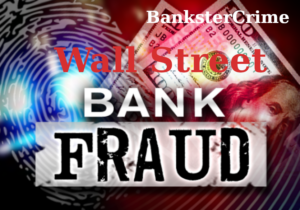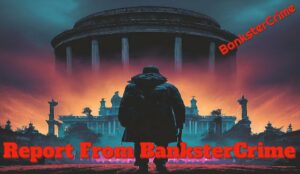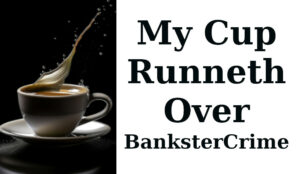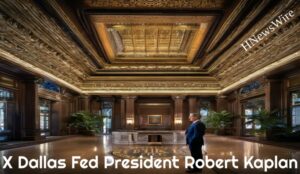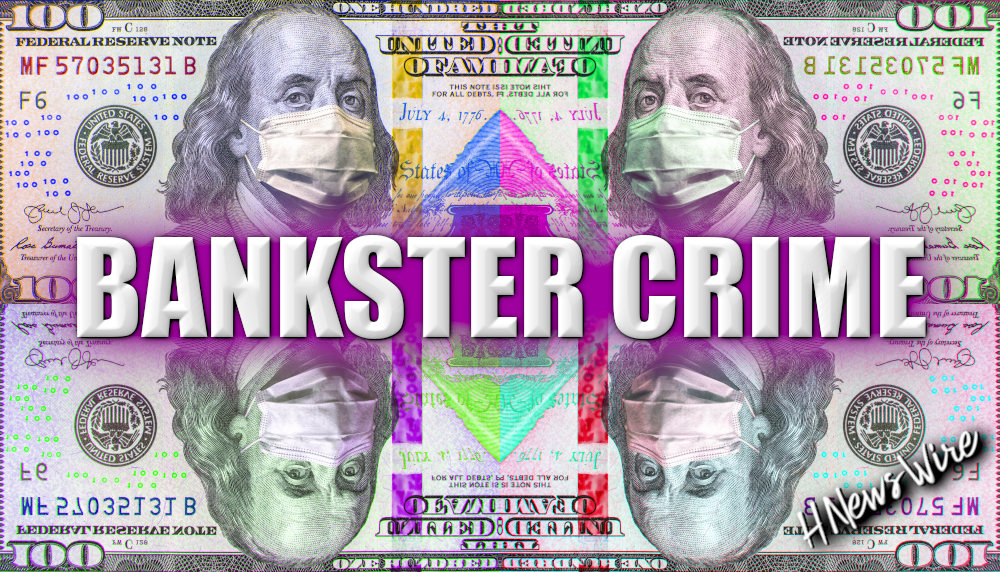
By Pam Martens and Russ Martens:
William C. (Bill) Dudley, Former President of the Federal Reserve Bank of New York
William (Bill) Dudley served as President of the New York Fed from 2009 to 2018. (He was previously an executive at Goldman Sachs.) During Dudley’s tenure at the New York Fed, it secretly oversaw the largest and darkest bailout of Wall Street mega banks in global banking history.
A Bloomberg News reporter, the late Mark Pittman, battled in court for years to get the details of those bailouts released to the public. Today, the former kingpin of darkness at the New York Fed, Bill Dudley, had the audacity to pen an opinion column for Bloomberg News, urging – wait for it – more transparency at the Fed.
The ironic title of Dudley’s column is (paywall): “If Only We Knew the Problems Facing America’s Banks.” (We do. See Federal Agency Study Contradicts Fed Chair: Finds Banking System Is Ripe for Another Crisis and Remains “Fragile and Uncertain.”)
The hubris of Dudley’s reign at the New York Fed is perhaps only second to Robert Kaplan’s reign at the Dallas Fed. (Kaplan also came from Goldman Sachs.)
Let’s start with Carmen Segarra, a lawyer and former bank examiner at the New York Fed, one of the 12 regional Federal Reserve Banks – but the only one with two trading floors and a money spigot to Wall Street. Segarra charged in a lawsuit filed in October 2013 that she was told to change her negative examination of Goldman Sachs by colleagues, who also obstructed and interfered with her investigation. According to her lawsuit, when she refused to alter her findings, she was terminated in retaliation and escorted from the New York Fed premises.
After having her case tossed by a federal Judge whose lawyer husband was representing Goldman Sachs, Segarra turned over her 46 hours of secret tape recordings on the matter to ProPublica’s Jake Bernstein and public radio’s This American Life, creating a media frenzy.
In early 2012, as JPMorgan Chase was making risky bets with derivatives in London, using deposits from its federally-insured bank in the U.S., its Chairman and CEO, Jamie Dimon, was sitting on the Board of Directors at the New York Fed. As Dimon’s bank was being investigated by the New York Fed, Jamie Dimon continued to sit on its Board, serving out his two terms which ended in late 2012. The derivatives debacle became infamously known as the London Whale trades where JPMorgan admitted to losing $6.2 billion of its bank depositors’ money.
But it wasn’t the New York Fed that released a transparent report on the London Whale and the diabolical risk-taking with federally-insured deposits, it was the U.S. Senate’s Permanent Subcommittee on Investigations.
A report in October of 2014 from the Federal Reserve’s Inspector General indicated that the New York Fed was advised of potential trouble in the Chief Investment Office at JPMorgan Chase on multiple occasions but failed to conduct a comprehensive examination that might have alerted it at an early stage to the wild gambles JPMorgan was making in derivatives with depositors’ money, leading to the London Whale scandal and $6.2 billion in losses.
While the New York Fed was “supervising” JPMorgan, Bill Dudley was serving as the President of the New York Fed and his wife, Ann Darby, a former Vice President at JPMorgan, was receiving approximately $190,000 per year in deferred compensation from JPMorgan – an amount she was slated to receive until 2021 according to financial disclosure forms.
According to the New York Fed’s web site, its “employees are subject to the same conflict of interest statute that applies to federal government employees (18 U.S.C. Section 208).” Under that statute, a spouse’s conflicts become the conflicts of the employee.
As far as we can recall, Dudley is the only Fed Bank President to have been put through a public shaming before a U.S. Senate Banking Subcommittee. In November 2014, the Senate Subcommittee on Financial Institutions and Consumer Protection called Dudley to testify following the Segarra revelations.
During the hearing, Senator Elizabeth Warren drilled down to just how Dudley saw his role as a regulator. In a revealing exchange, Dudley made it clear that he didn’t interpret his role as a cop on the beat, calling his job “more of a fire warden” to make sure the banking institutions are run well so that they’re not going to catch on fire and burn down.
Warren shot back: “But you don’t think you should be doing any investigation; you should wait and see if it jumps in front of you.” Warren also brought out the fact that once the New York Fed learned that Goldman Sachs had fashioned a deal for the Spanish bank, Banco Santander, which a New York Fed employee called “legal but shady,” to dress up its capital, the New York Fed failed to bring the activity to the attention of European banking regulators.
Citigroup, supervised by the New York Fed, burned down to a 99-cent stock while Dudley was President at the New York Fed. It would later be revealed via a Government Accountability Office audit that Citigroup had secretly received $2.5 trillion in cumulative emergency loans from the New York Fed from December 2007 to at least July of 2010 to resuscitate its sinking carcass.
Dudley’s appearance at the Senate hearing was followed by testimony from David O. Beim, Professor of Professional Practice at Columbia Business School. Professor Beim was the author of a 2009 report, commissioned by the New York Fed, that was highly critical of how deferential the regulator was to the banks it was charged with supervising. The report made multiple recommendations for changing the culture. The existence of the report was revealed in the ProPublica story on the Segarra tapes. At the Senate hearing, Dudley admitted that he had never spoken with Professor Beim in the five years since the report was given to him but said many recommendations had been implemented.
Related Articles:
The New York Fed Is Exercising Powers Never Bestowed on It by any Law
The Man Who Advises the New York Fed Says It and Other Central Banks Are “Fueling a Ponzi Market”
Here’s Why the New York Fed Doesn’t Want You to See a Photo of Its Wall Street-Esque Trading Floor
Is the New York Fed Too Deeply Conflicted to Regulate Wall Street?
New Documents Show How Power Moved to Wall Street, Via the New York Fed
Intelligence Gathering Plays Key Role at New York Fed’s Trading Desk


Treat your skin well. Our soaps are gentle and produce a smooth, creamy lather that is nourishing to your skin. They are handmade in small batches. We use only high-quality natural ingredients. No chemicals, no sodium laurel sulfate, no phthalates, no parabens, no detergents. GraniteRidgeSoapworks
![]()
